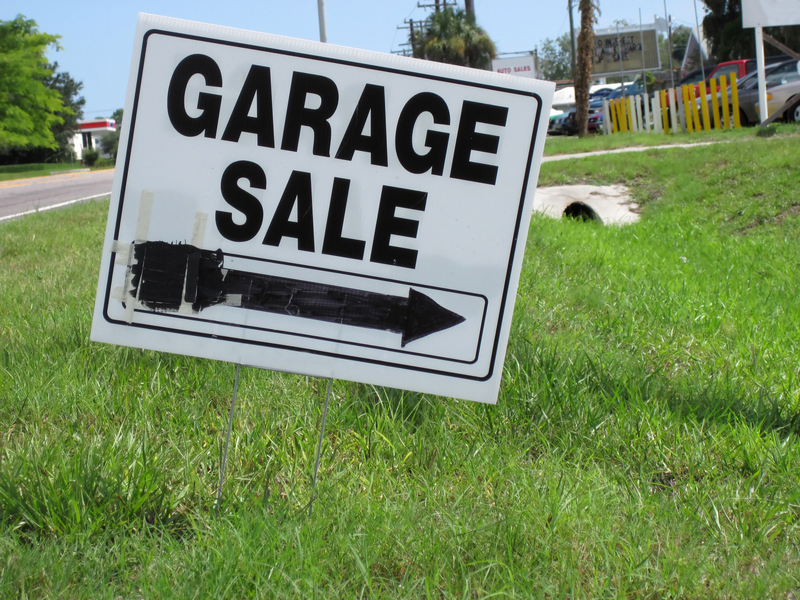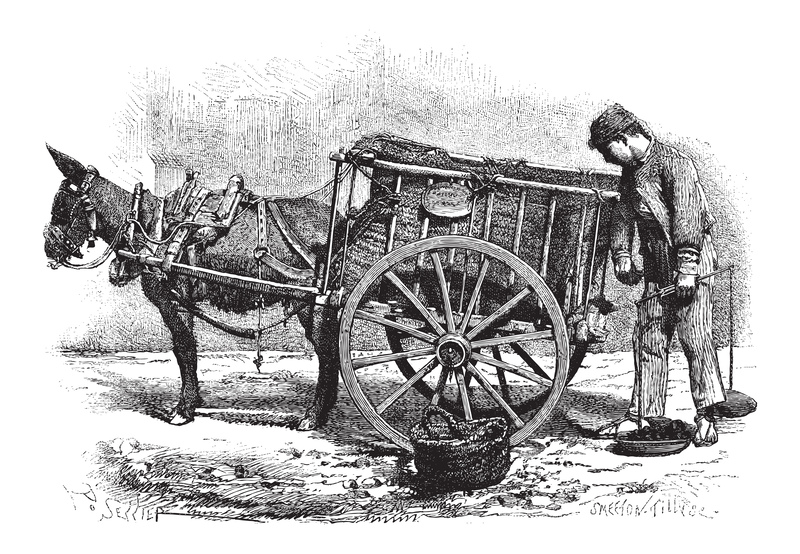Upcycle Your Way to a Personalized and Sustainable Home
In today's eco-conscious world, more homeowners are seeking creative and meaningful ways to express their style while reducing their environmental impact. Upcycling offers an enriching solution that blends personalization and sustainability for your home. In this comprehensive guide, we'll help you discover the art and benefits of upcycling, along with inspiring ideas and practical steps to upcycle your way to a personalized and sustainable home.
What is Upcycling?
Upcycling is the process of transforming unwanted, discarded, or unused materials and products into new items of higher quality, value, or appeal. Unlike recycling, which often breaks materials down to create new raw materials, upcycling breathes new life into existing objects--minimizing waste while allowing you to create distinct, sustainable home decor and functional items.

Why Choose Upcycling for a Sustainable and Personalized Home?
- Eco-friendly Transformation: Upcycling keeps items out of landfills and reduces the demand for new resources.
- Unique Personalization: Every upcycled piece carries its history and can be tailored to reflect your individual taste and home aesthetic.
- Cost Savings: Give a second life to objects you already own or thrift, saving money compared to buying new products.
- Creative Satisfaction: There's immense satisfaction in crafting and customizing your own pieces, making your home truly unique.
Upcycling seamlessly merges sustainability and self-expression, setting the stage for a home that's both environmentally responsible and utterly one-of-a-kind.
The Environmental Impact of Upcycling
When you choose to upcycle instead of buying new, you are making a powerful statement in favor of sustainability. Here are just a few environmental advantages:
- Less Waste: By reusing items, you reduce the volume of waste sent to incinerators and landfills.
- Reduced Resource Consumption: Upcycling cuts down on the energy, water, and raw material consumption required to manufacture new goods.
- Lower Carbon Footprint: Fewer new products means less production, lower emissions, and reduced transportation impacts.
Adopting upcycling as a lifestyle means your home tells a story of resourcefulness, responsibility, and creativity.
Getting Started: How to Upcycle for a More Sustainable and Personalized Living Space
Audit and Assess What You Already Have
The first step toward a personalized, sustainable home is to look at what you already own. Take a walk through your rooms, closets, attic, and garage. Make a list of items that are unused, worn-out, outdated, or simply don't match your current taste.
- Old furniture (dressers, chairs, tables)
- Glass jars and bottles, tin cans
- Clothing, linens, fabrics
- Wood scraps and pallets
- Books, magazines, frames
Set a Vision: Match Upcycling Projects to Your Home Style
Think about how your upcycled items can match or enhance your interior design style. Whether you love modern minimalism, rustic farmhouse, or bohemian chic, there are upcycling ideas to suit every look.
Gather Your Tools and Supplies
Typical upcycling projects may require:
- Screwdrivers, hammers, sandpaper
- Paints, stains, and brushes
- Glue, nails, screws
- Upholstery supplies (fabric, stuffing)
- Protective gear (gloves, goggles)
Pro tip: Research safe and non-toxic options for paints and finishes to stay eco-friendly in your upcycling journey.
Top Upcycling Project Ideas for a Sustainable and Personalized Home
1. Furniture Makeover
Give old furniture pieces a second life! A dresser with peeling paint could become a shabby chic statement piece after sanding and repainting. Even outdated coffee tables can serve as new benches or storage chests with a little creativity and elbow grease. Try:
- Repainting nightstands or end tables in bold, modern hues
- Turning an old ladder into a rustic bookshelf or towel rack
- Replacing hardware on cabinets for a fresh, personalized look
2. Textile Transformations
Old shirts, jeans, or even curtains can be upcycled into functional items or unique decor accents.
- Sew pillow covers and throws from old sweaters or flannels
- Convert t-shirts into braided rugs or stylish tote bags
- Craft fabric wall art, quilts, or even lampshades for a soft, personal touch
3. Lighting from Unlikely Objects
Lighting is a fantastic way to introduce upcycled charm into your sustainable home. Explore these innovative ideas:
- Use mason jars or wine bottles to create pendant lights or table lamps
- Stack books, teacups, or old pipes for quirky floor or desk lamp bases
- Add string lights to repurposed frames or baskets for ambient glow
4. Planters and Vertical Gardens
Add greenery to your indoor and outdoor spaces with upcycled planters. Some favorites include:
- Retrofit tin cans, teapots, rain boots, or even drawers into whimsical pots
- Mount wooden pallets for living walls or herb gardens
- Hang old colanders or baskets for unique hanging planters
5. Wall Art and Decor
Walls are blank canvases for upcycled creativity. Here are some ways to make personalized art for less:
- Frame pressed flowers, pages from books, or vintage maps
- Mount wooden crates or wine boxes as shadow box storage or shelves
- Assemble a gallery wall of thrifted mirrors, plates, or record covers
6. Organization and Storage Solutions
Keep your spaces tidy with upcycled organizers:
- Turn jars or cans into desktop organizers or bathroom caddies
- Build shelving from reclaimed wood or stacked crates
- Repurpose magazine holders as kitchen organizers or charging stations
Tips for Successful Upcycling in Your Home
- Start Small: Begin with simple projects to build confidence and skill.
- Think Function and Form: Combine usefulness with beauty for lasting additions to your home.
- Mix and Match: Don't be afraid to mix materials, textures, and colors.
- Practice Safe Upcycling: Research safe methods for deconstructing or repainting items, and use eco-friendly finishes where possible.
- Let Your Home Tell Your Story: Personalize items with paint, stencils, decoupage, or family memorabilia.
- Encourage Household Participation: Upcycling can be a fun family activity or community project.
Where to Find Upcycling Materials
The best upcycling projects often start with what you already own, but if you're on the hunt for new materials, consider:
- Thrift stores, estate sales, and garage sales
- Community swap meets or online buy-nothing groups
- Construction site offcuts (with permission)
- Discarded pallets and crates from local businesses
- Friends or neighbors decluttering their homes
With creativity, almost anything can be transformed into something beautiful and functional for your personalized, sustainable home.
Room-by-Room Upcycling: Personalize and Green Your Entire Home
Kitchen and Dining
- Transform glass jars into storage, spice containers, or vases
- Old serving trays as wall-mounted message boards or shelves
- Repurpose vintage plates as wall art
Living Room
- Refurbish coffee tables and side tables
- Make a patchwork pouf from old fabrics
- Turn crates into shelving or storage ottomans
Bedroom
- Headboards from reclaimed wood or doors
- Under-bed storage from drawers or vintage suitcases
- Dress up table lamps with handmade fabric shades
Bathroom
- Wall hooks from doorknobs or old tools
- Repurposed jars for cotton swabs, soaps, and toothbrushes
- Small ladders for towel racks or magazine holders
Garden and Outdoor Areas
- Pallets and barrels as planters or compost bins
- Garden furniture from reclaimed wood or metal
- Glass bottles as garden edging or solar lanterns
Frequently Asked Questions About Upcycling for a Personalized and Sustainable Home
Is upcycling suitable for beginners?
Absolutely. Start with simple projects such as painting jars or creating planters. As your confidence grows, you can take on larger furniture or decor transformations.
Do upcycled items last as long as new products?
In many cases, yes. With proper materials and finishes, upcycled pieces can be as durable--if not more so--than brand new items. Plus, they age with grace and character unique to your home.
How can I make sure my upcycling practices are truly sustainable?
Choose local or secondhand materials, avoid toxic finishes, and prioritize projects that provide lasting value and function. Sharing and gifting upcycled creations is another way to extend their lifecycle and ecological benefits.

The Bigger Picture: Upcycling and the Circular Economy
Upcycling is an essential part of the circular economy, a system that aims to eliminate waste by keeping products in use for as long as possible. By upcycling for your home, you're not just making your space unique--you're contributing to a global movement for responsible resource use and reduced environmental impact.
Imagine a world where every household actively upcycles: landfills would shrink, pollution would fall, and unsustainable consumption would be a relic of the past. Your personalized and sustainable home can be the starting point for a brighter, cleaner future.
Start Your Upcycling Adventure and Create a Personalized, Sustainable Home
There's never been a better time to embrace upcycling as the path to a more eco-friendly, meaningful, and unique living space. Whether you're revamping a room or simply adding a conversation piece, every upcycled project reflects your commitment to sustainability and creativity.
- Start small, think big, and upcycle with purpose.
- Tell your sustainable home story through every personalized item.
- Inspire friends and family to join you on the upcycling journey.
Turn the ordinary into the extraordinary--upcycle your way to a personalized and sustainable home today.
